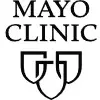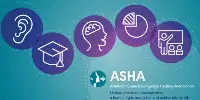Introduction
When we think about otosclerosis, it’s common to associate it with adults, particularly seniors. However, this progressive hearing condition doesn’t exclusively affect the elderly. Indeed, otosclerosis can be a part of the lives of young people, from children to teenagers, creating unique challenges that need our attention and understanding.
Otosclerosis in younger individuals is less commonly discussed, and this lack of spotlight can lead to many misconceptions and a feeling of isolation for those affected. But it’s important to realize that these young individuals are not alone in their journey. This post is dedicated to their stories, their challenges, and their resilience. In shedding light on pediatric and early onset otosclerosis, we aim to foster understanding and inspire more empathetic support for these brave young souls.
To truly comprehend the impacts of this condition, we will delve into the lives of young people who live with otosclerosis every day. We’ll look at the impacts on their learning and development, understand the unique challenges they face, and offer practical advice for parents and caregivers to help them navigate through their journey with otosclerosis.
By listening to their narratives, we hope to build bridges of understanding and empathy, showing that even in the face of challenges, hope, courage, and strength prevail. So, let’s embark on this journey together, exploring the world of pediatric otosclerosis through their young ears.
Diagnosing and Managing Otosclerosis in Young People
Diagnosing otosclerosis in young individuals can often be a challenging process. Unlike in adults, otosclerosis in young people may present differently and can be mistaken for other hearing or development issues. Consequently, an early diagnosis is key in managing the condition effectively and minimizing its impact on the child’s life.
Consider the story of Lily, a vibrant nine-year-old girl diagnosed with otosclerosis. Initially, Lily’s parents thought she was just being inattentive when she continually asked them to repeat what they said. It was only when Lily’s school teacher expressed concerns about her falling grades that they sought a professional evaluation, leading to her diagnosis.
Managing otosclerosis in young individuals like Lily requires a comprehensive approach that combines medical treatment, auditory training, psychological support, and educational accommodations. Lily, for instance, was prescribed hearing aids, underwent auditory training, and her school was informed about her condition to ensure necessary accommodations were made. Her story exemplifies the importance of early diagnosis and an integrated management approach in mitigating the impacts of otosclerosis in young people.
Impacts of Otosclerosis on Children’s Learning and Development
Otosclerosis can have profound impacts on a child’s learning and development. As children primarily learn through auditory stimuli, hearing loss can lead to challenges in language acquisition, academic performance, and social interaction.
Daniel, a 12-year-old boy with otosclerosis, struggled with his schoolwork as he found it difficult to follow classroom discussions and instructions. His parents noticed that he was often quiet during family gatherings and seemed isolated from his peers. Upon consultation with a professional, it was clear that Daniel’s otosclerosis was affecting his academic performance and social interactions.
After receiving the necessary interventions, including hearing aids and speech therapy, Daniel’s performance in school improved significantly. He also began participating more actively in social activities. The change in Daniel’s life illustrates how timely interventions can help minimize the impact of otosclerosis on a child’s learning and development.
Supporting Teens Living with Otosclerosis: A Guide for Parents
The teenage years are a pivotal time of growth and self-discovery. However, for teens living with otosclerosis, this period can be complicated by their struggle with hearing loss. In this stage of life, understanding, empathy, and the right support are vital.
Take the example of 16-year-old Sarah, a diligent student and an aspiring musician. Sarah was always passionate about music, but when otosclerosis affected her hearing, she became uncertain about her dreams. Along with the physical impacts, Sarah experienced emotional turmoil, feeling a mix of anger, frustration, and helplessness.
Her parents took the initiative to seek not only medical help but also emotional support for Sarah. They arranged for therapy sessions and encouraged her to express her feelings openly. Through group therapy, Sarah met other teens dealing with similar experiences, helping her realize she wasn’t alone in her journey. In time, she discovered she could still pursue her passion for music using visual cues and vibration sensations. Sarah’s journey underscores how an empathetic, supportive environment can help teens living with otosclerosis navigate their way through the complex challenges they face.
Understanding the Unique Challenges of Pediatric Otosclerosis
Pediatric otosclerosis, although rare, presents unique challenges. Unlike adults, children are in their critical stages of development, and hearing loss can have wide-ranging impacts on their speech, language, cognitive, and social development.
James, diagnosed with otosclerosis at the tender age of four, faced significant speech delays. His parents initially mistook his inability to pronounce words correctly as a typical part of his development. But as the delay persisted, they consulted a pediatric audiologist who confirmed James had otosclerosis.
James’s parents and his medical team worked tirelessly to help him catch up on his speech and language development. He was fitted with hearing aids and underwent intense speech therapy. His parents also received education on how to assist him at home. His story brings to light the unique challenges posed by pediatric otosclerosis and the importance of early diagnosis and intervention.
Prof-ReChargeable-Hearing-Aid
Experience Exceptional Sound Quality with Vivtone RIC02, a professional RIC hearing aid featuring a receiver in the canal design. Enjoy superior sound fidelity, reduced distortion, and minimal feedback. With a remarkable 51dB peak sound gain, it surpasses many other devices, catering to a wide range of hearing loss levels.
State-of-the-Art Technology awaits you with Vivtone RIC02. Designed with US-made components from renowned brands like Intricon and Knowles, this advanced device offers exceptional quality at a fraction of the cost. The built-in 30mAh steel-sealed lithium polymer battery charges rapidly in just 1.5 hours and provides an impressive battery life of over 20 hours.
Reliability and Water Resistance come hand in hand with the Vivtone RIC02. Secure your device with the included lanyard and clip, preventing accidental loss. With an IP65 rating, these hearing aids are resistant to water, sweat, and raindrops, assuring longevity and durability. Give the perfect gift to your seniors and loved ones, as this device combines functionality with an appealing appearance and packaging.
Early Onset Otosclerosis: Case Studies and Insights
Early onset otosclerosis, while rare, offers valuable insights into this condition. These case studies reveal a range of challenges and triumphs, providing a deeper understanding of the resilience of these young individuals.
Consider Alex, diagnosed with otosclerosis at age six. Despite facing difficulties in school and social isolation due to his hearing loss, Alex never lost his optimism. With the support of his family, Alex learned sign language and excelled in school by utilizing assistive technology. Today, he is an advocate for others with otosclerosis, using his experiences to inspire and encourage other young people facing similar challenges.
The story of Alex, along with others in this post, paints a vivid picture of early onset otosclerosis. Through these narratives, we gain a better understanding of the condition and the importance of personalized care, early interventions, and a strong support system.
Summary
Life with otosclerosis, especially at a young age, is undoubtedly a journey filled with unique trials. But, as we’ve seen through the narratives of Lily, Daniel, Sarah, James, and Alex, it’s also a journey of resilience, adaptability, and courage.
These brave individuals have shown us that while otosclerosis may alter the way they experience the world, it doesn’t define who they are. They’ve risen above their challenges, driven by determination and supported by the unconditional love of their families, effective treatment strategies, and understanding from their communities.
Parents and caregivers play a pivotal role in this journey. By providing a nurturing environment, seeking early and comprehensive interventions, and advocating for their child’s needs, they can significantly enhance their child’s quality of life and their ability to realize their full potential.
Moreover, educators and healthcare professionals also play an essential part in supporting young individuals with otosclerosis. Through accommodations in the educational setting, providing necessary therapeutic interventions, and offering continuous support, they can help these young individuals thrive.
Lastly, fostering a supportive and understanding society is crucial. By shedding light on the experiences of young people with otosclerosis, we aim to create a society where they are accepted, understood, and supported, thus paving the way for their future successes.
Indeed, the road for young people with otosclerosis might seem tough, but it’s also filled with opportunities for growth, learning, and empowerment. Their stories of resilience remind us that they’re not defined by their hearing loss, but by their strength and spirit. With understanding, support, and the right interventions, they will continue to inspire us all.








